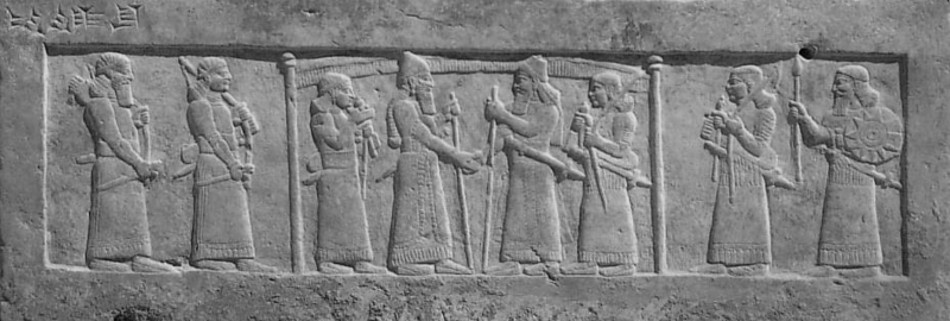You are seeing an unstyled version of this site. If this is because you are using an older web browser, we recommend that you upgrade to a modern, standards-compliant browser such as FireFox [http://www.getfirefox.com/], which is available free of charge for Windows, Mac and Linux.

The LMU Munich- [http://www.uni-muenchen.de/index.html] and Humboldt Foundation-funded [https://www.humboldt-foundation.de/web/home.html] Official Inscriptions of the Middle East in Antiquity (OIMEA) is presently an umbrella project that is intended to facilitate quick and easy access to a wide range of open-access editions of ancient Middle Eastern texts, all of which at this time are hosted on the Open Richly Annotated Cuneiform Corpus [http://oracc.museum.upenn.edu] (Oracc) platform. Some projects (see below) are directly or indirectly managed by members of the chair of the Alexander von Humboldt Chair for Ancient History of the Near and Middle East of Ludwig-Maximilians-Universität München (Historisches Seminar - Abteilung Alte Geschichte), Karen Radner [http://www.ag.geschichte.uni-muenchen.de/personen/mitarbeiter/radner/index.html] -- in particular Alexa Bartelmus [http://www.ag.geschichte.uni-muenchen.de/personen/mitarbeiter/bartelmus/index.html], Birgit Christiansen [https://www.ag.geschichte.uni-muenchen.de/personen/mitarbeiter/christiansen/index.html], and Jamie Novotny [http://www.ag.geschichte.uni-muenchen.de/personen/mitarbeiter/novotny/index.html] -- while others are not and these are included here under a Creative Commons Attribution Share-Alike [http://creativecommons.org/licenses/by-sa/3.0/] license.
As is obvious from the project's name, the scope of OIMEA is official inscriptions:
- Achaemenid Royal Inscriptions online [http://oracc.museum.upenn.edu/ario/index.html] (ARIo [http://oracc.museum.upenn.edu/ario/index.html]; Ludwig-Maximilians-Universität München)
- Corpus of Kassite Sumerian Texts [http://oracc.museum.upenn.edu/ckst/index.html] (CKST [http://oracc.museum.upenn.edu/ckst/index.html]; University of California Berkeley)
- Electronic Corpus of Urartian Texts [http://oracc.museum.upenn.edu/ecut/index.html] (eCUT [http://oracc.museum.upenn.edu/ecut/index.html]; Ludwig-Maximilians-Universität München)
- Electronic Text Corpus of Sumerian Royal Inscriptions [http://oracc.museum.upenn.edu/etcsri/index.html] (ETCSRI [http://oracc.museum.upenn.edu/etcsri/index.html]; Eötvös Loránd University Budapest)
- The Inscriptions of Suhu online [http://oracc.museum.upenn.edu/suhu/index.html] (Suhu [http://oracc.museum.upenn.edu/suhu/index.html]; Ludwig-Maximilians-Universität München)
- The Royal Inscriptions of Assyria online [http://oracc.museum.upenn.edu/riao/index.html] (RIAo [http://oracc.museum.upenn.edu/riao/index.html]; Ludwig-Maximilians-Universität München)
- The Royal Inscriptions of Babylonia online [http://oracc.museum.upenn.edu/ribo/index.html] (RIBo [http://oracc.museum.upenn.edu/ribo/index.html]; Ludwig-Maximilians-Universität München)
- The Royal Inscriptions of the Neo-Assyrian Period online [http://oracc.museum.upenn.edu/rinap/index.html] (RINAPo [http://oracc.museum.upenn.edu/rinap/index.html]; University of Pennsylvania [now in collaboration with Ludwig-Maximilians-Universität München])
In time, OIMEA will include corpora of texts written in other languages, including Aramaic, Phoenician, and Luwian. Moreover, the OIMEA team also intends to make the site a powerful multi-project search engine that will enable anyone interested in official inscriptions to simultaneously search the translations, transliterations, catalogues, and portal pages of every available project on which official inscriptions of the Middle East in Antiquity are edited. As an informational and search hub, the project strives to make the vast and varied corpus of inscriptions easily and freely accessible to every scholar, student, and member of the general public, and, in the near future, to enable our users the ability to effectively and efficiently search that rich genre of ancient records.
To access the annotated editions, click on the links above or in the main menu. NOTE that by clicking on the project links in the main menu you will leave the OIMEA project and your browser will load the selected site's home page. However, if you click on the links embedded in the text above, your browser will open the selected project's home page in a new tab; the OIMEA home page will continue to be accessible in the tab labelled "Official Inscriptions of the Middle East in Antiquity."
PDFs of articles on Mesopotamian royal inscriptions were published in the Annual Review of the Royal Inscriptions of Mesopotamia. Digitized versions of those publications are now available on Digital Archive of the Annual Review of the Royal Inscriptions of Mesopotamia (published 1983-1991) [http://oracc.museum.upenn.edu/arrim/index.html].
